Get your daily Popeye spinach allowance with the easiest recipe ever for this Korean sesame spinach side dish.
Serve this healthy side dish alongside a meal of vegan Korean tofu soup, egg and tomato stir fry, or easy Japanese baked salmon.
Why does Popeye eat spinach out of a can when he could just eat this?
Spinach made easy
If not the easiest, it is certainly one of the easiest.
- Boil spinach
- Season with sesame oil and salt
- Garnish with toasted sesame seeds too if you like
This recipe is similar to what you would probably find at Korean restaurants that serve this spinach side dish as part of the “banchan” set or complementary side dishes the meal usually comes with.
Use adult spinach
While baby spinach could be used, it is traditional to use adult long stemmed spinach.
The stem adds a crunchy note to the dish that you just don’t get with baby spinach alone.
Baby, please!
But I feel you. Baby spinach comes pre-packaged, triple washed, and ready to cook (even though you should probably still wash it at home).
Adult spinach, meanwhile, requires thorough washing and to remove any residual dirt.
Use baby spinach if you please, but it is just not quite the same texture.
How to make Korean Sesame Spinach
Step 1: Blanch spinach
After cutting off the edge of the spinach stems, drop in boiling water.
You could salt to the water, but this recipe is typically seasoned after cooking.
It will only take about a minute for the spinach to be properly cooked.
Drain and shock in ice water or run the spinach under very cold water.
Step 2: Squeeze out water
Once the spinach has been cooked, squeeze out the excess water with your hands.
This requires taking handfuls of the spinach and pressing them between both hands to get as much liquid out as you can.
This is truly the most painful part of the recipe and quite an effective deterrent from making it.
Thankfully, it is just one bunch of spinach.
Step 3: Season
Toss the squeezed out spinach with sesame oil and salt.
Your hands have gotten to know the spinach quite well by now, so why not use them again to massage in the seasonings?
Step 4: Serve or Store
This dish can be served cold or at room temperature.
Make this ahead of time, and leave it in the fridge.
Snack on it with the best rice, noodle soup, or other side dishes.
Consume within 2-3 days.
Other variations
There are many variations of this recipe. Some also include the following:
- very finely grated raw garlic
- Korean chili paste aka gochujang
- Korean chili flakes aka gochugaru
- Korean soybean paste aka doenjang
- soy sauce
Other vegetables you could use are:
- broccoli florets
- broccolini
- shredded carrots
- mung bean sprouts
- soybean sprouts
However, the recipe provided below with spinach is a very simple and classic one.
Tips to make it better @home
- Squeezing out as much water as you can from the spinach is essential so your spinach absorbs the seasoning and doesn’t taste watery.
- For more flavor, try adding a 1/2 teaspoon of finely minced raw garlic or soy sauce.
- Make this up to 2-3 days ahead of time.
- Serve cold or at room temperature.
More Easy Side Dishes
5 Minute Korean Bean Sprout side dish
Simple & Succulent Edamame that’s not Boring
Mashed Purple Sweet Potato Recipe (taste the rainbow!)
Easiest Ever Korean Sesame Spinach
Ingredients
- 1 bunch spinach organic if you can find it
- 1 Tb sesame oil
- 1/2 tsp sea salt or 1 tsp kosher salt
- 1 tsp toasted sesame seeds
Instructions
- Bring large pot of water to a boil. Add spinach and cook until just wilted. About 1 minute.
- Drain spinach and shock in ice water or run under cold water. Squeeze excess water out of the spinach.
- Season spinach with sesame oil and salt. Garnish with sesame seeds.
Notes
- Squeezing out as much water as you can from the spinach is essential so your spinach absorbs the seasoning and doesn't taste watery.
- For more flavor, try adding a 1/2 teaspoon of finely minced raw garlic or soy sauce.
- Make this up to 2-3 days ahead of time.
- Serve cold or at room temperature.
Nutrition
Do you believe in the Popeye power of spinach? Please spread the Asian ♥ and share!



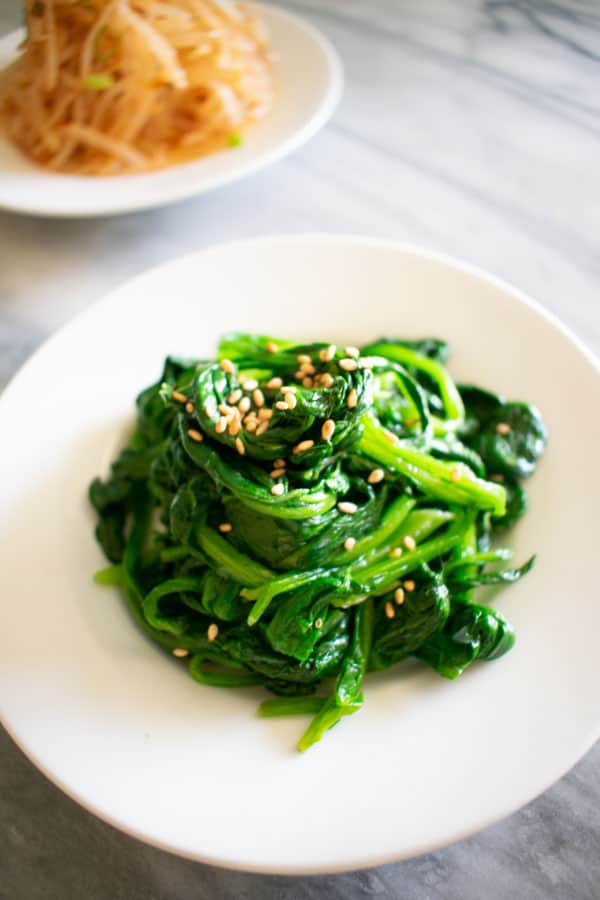
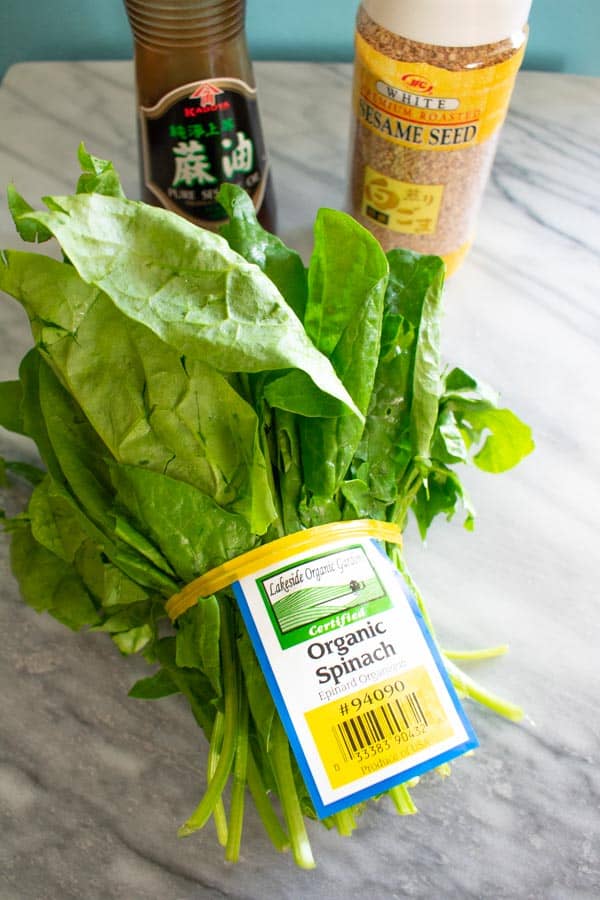
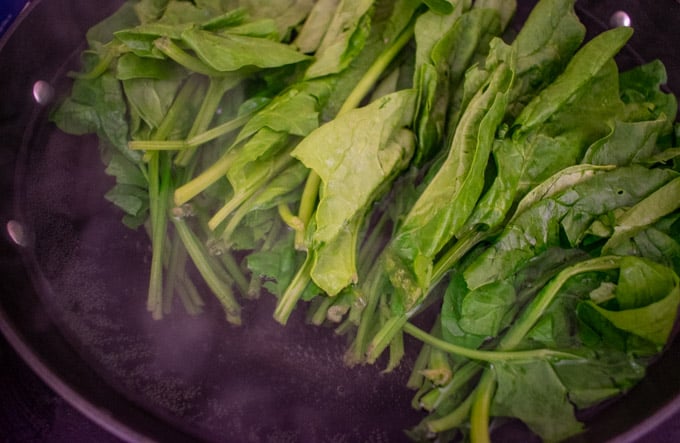
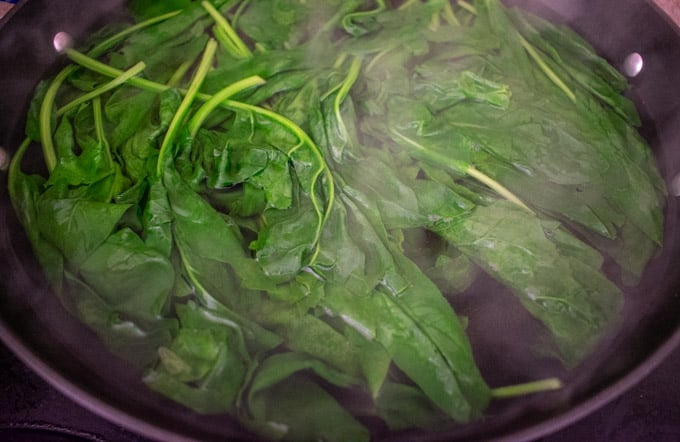
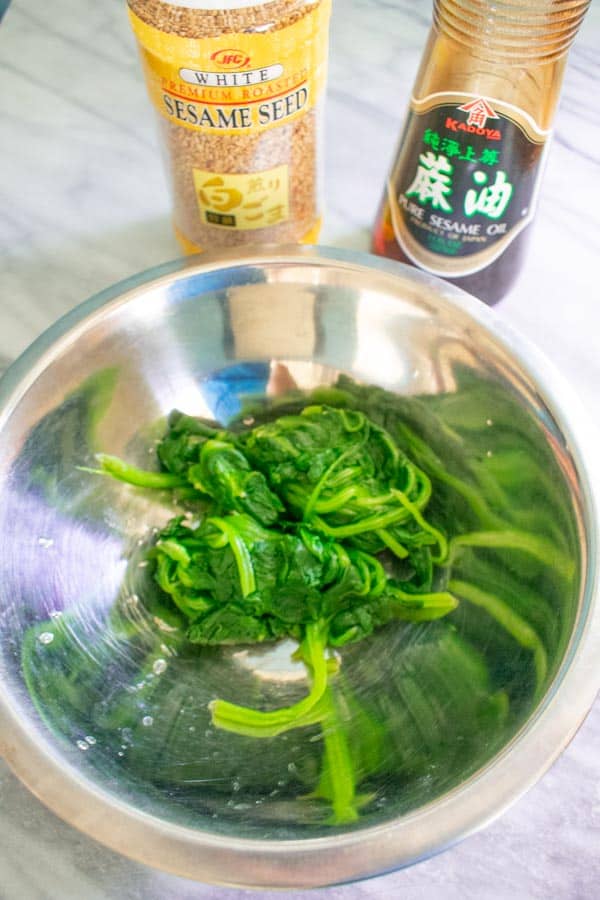

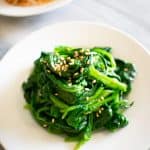

Leave a Reply